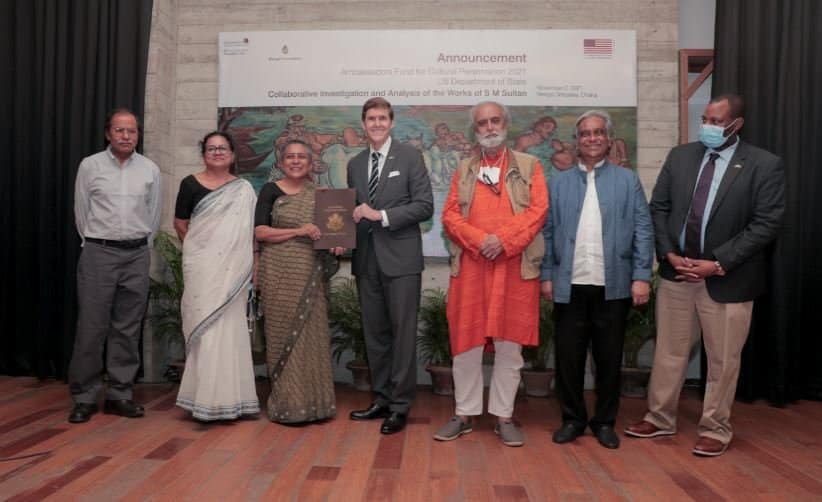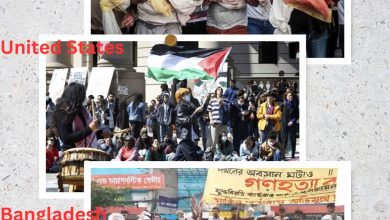US funds research, restoration of SM Sultan’s works

The United States (US) has funded study and restoration of the Bangladesh’s legendary artist SM Sultan’s paintings marking Bangladesh’s golden jubilee and 20 years of the US Ambassadors Fund
for Cultural Preservation.
US Ambassador to Bangladesh Earl Miller and Director General of Bangla Academy Mohammad Nurul Huda jointly inaugurated the US-funded cultural preservation project on SM Sultan’s artworks at Bengal Shilpalay in Dhanmondi on Tuesday, a US embassy press release said here.
Ambassador Miller presented a ceremonial plaque to the Bengal Foundation’s Director General Luva Nahid Chowdhury to formally inaugurate the project and toured the SM Sultan exhibition at the gallery.
The three-year initiative, funded through the US government’s prestigious Ambassadors Fund for Cultural Preservation (AFCP), supports study, analysis, and restoration of the largest collection of Sultan’s paintings and will train young Bangladeshi conservation professionals on sustainable conservation techniques, methodologies, and restoration models.
In the past 20 years, the United States has supported 12 AFCP projects totaling over US $870,000 to preserve and restore Bangladeshi cultural heritage and patrimony, including restoring the 17th-century Mughal Hammam
Khana in the Lalbagh Fort Complex; working with Varendra Research Museum to make its collection more accessible to the public and documenting and preserving Baul song and cultural traditions, Jamdani weaving methods, and a 2,000-year-old metal casting technique.
The AFCP 2022 call for cultural preservation proposals is now open, with a deadline of December 1, 2021.
Since its establishment in 2001, the United States has supported over 1,000 AFCP preservation projects in 130 countries reflecting American values and demonstrating US friendship.
The AFCP projects support post-disaster and post-conflict recovery, create economic opportunities and build mutual understanding and typically involve expert local partners and promote the use of traditional materials and
methods.





